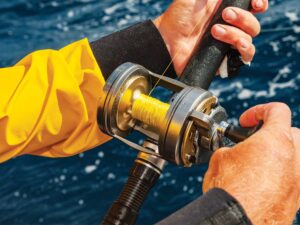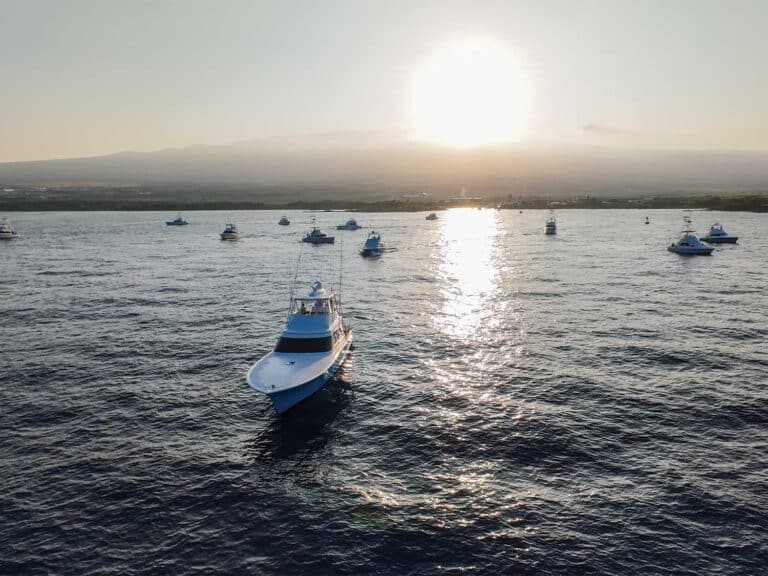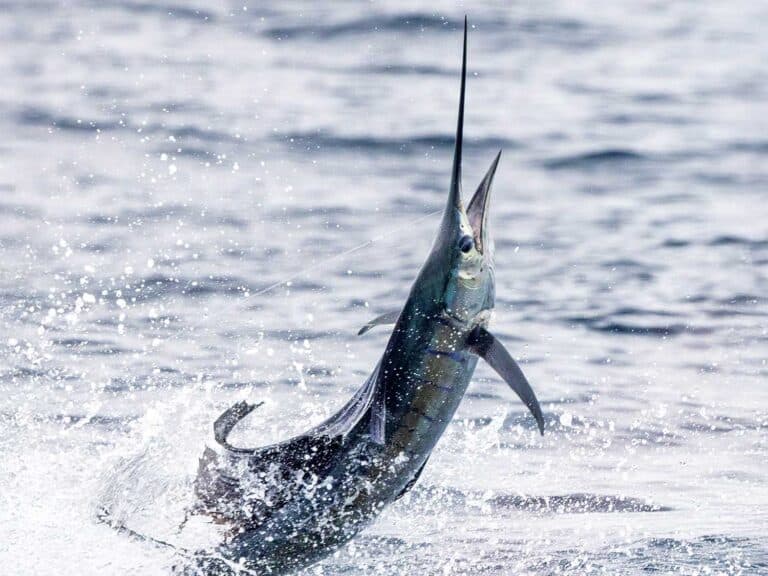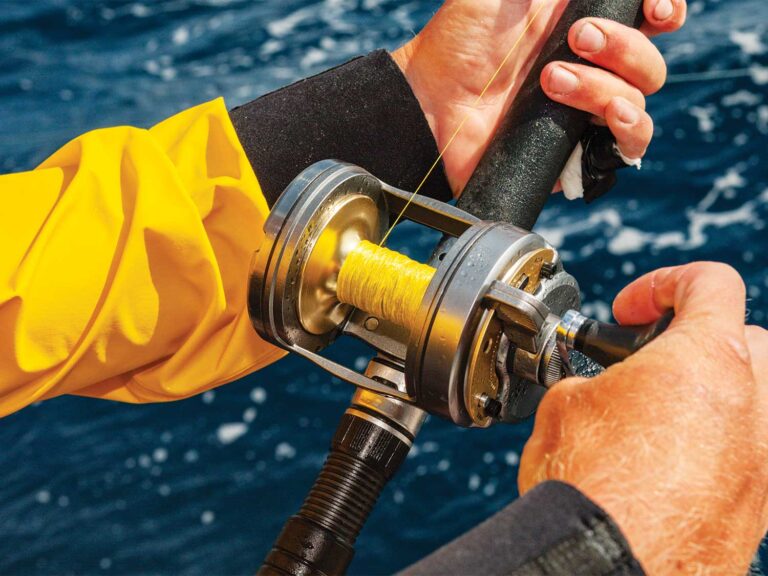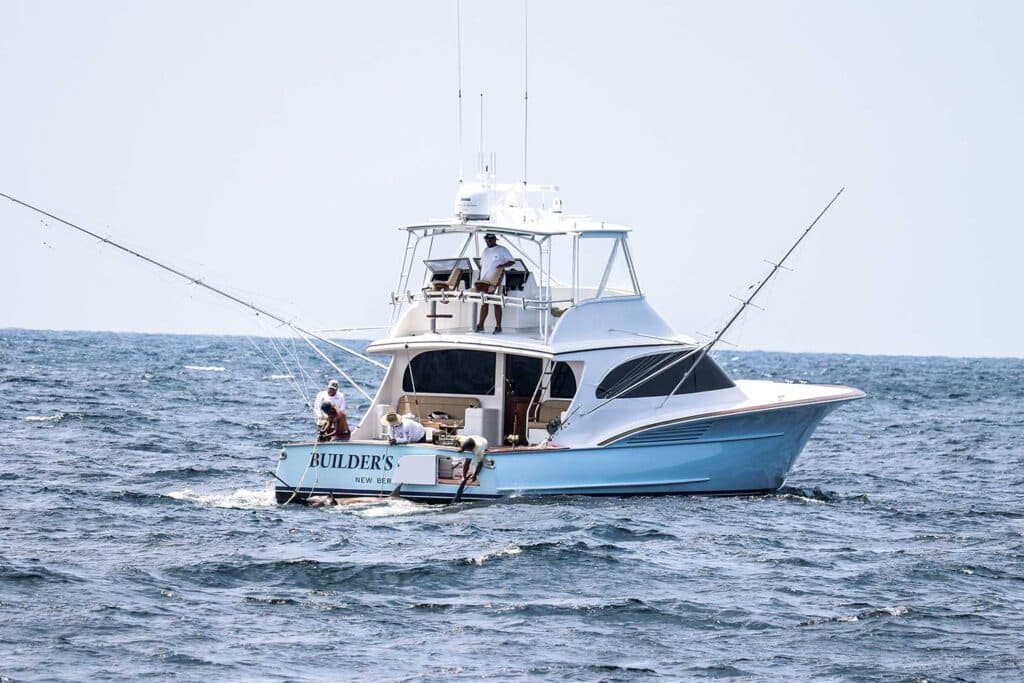
Subscribe to Marlin magazine and get a year of highly collectible, keepsake editions – plus access to the digital edition and archives. Sign up for the free Marlin email newsletter.
In the current days of big-money tournaments and fierce competition, knowing how to properly care for your boated fish that is headed to the scales can mean the difference in millions of dollars. Ounces matter, even on big blue marlin where you would expect margins to be great with fish of that size. Yet time and again, we witness big-money tournaments won and new world records set by mere pounds or even ounces. With advances in fishing technology and tackle, and more-seasoned crews, even with a monster on deck, you still need to take care of your catch from the time you sink the gaffs in her until the time you get to the tournament scale.
I spoke with Brent Gaskill, captain of the 64-foot Jarrett Bay Builder’s Choice, about what his crew does to care for their catch and prepare it for the scales. This sport-fishing program does a loop that puts them into some of the largest tournaments on the East Coast, in the Bahamas and in Bermuda. Gaskill stressed that trying to get a decent gaff shot is always the goal, but in his experience, it has been proved that every fish is different and things rarely go as planned when the moment happens. “Big fish are usually hard to kill,” he says.
Once the fish is on deck, Gaskill and his crew prefer to leave the flying gaffs in place and let the weigh-in crews deal with removing them at the scale. “Leaving them in place doesn’t allow blood to exit out of the gaff holes at any point before weigh-ins,” Gaskill explains.
The crew aboard Builder’s Choice likes to wet a white blanket and lay it on the fish for the ride in. They also keep the deck wet all around the fish. Depending on the length of the ride, sometimes they will take trash bags and load them up with ice to throw on the fish.
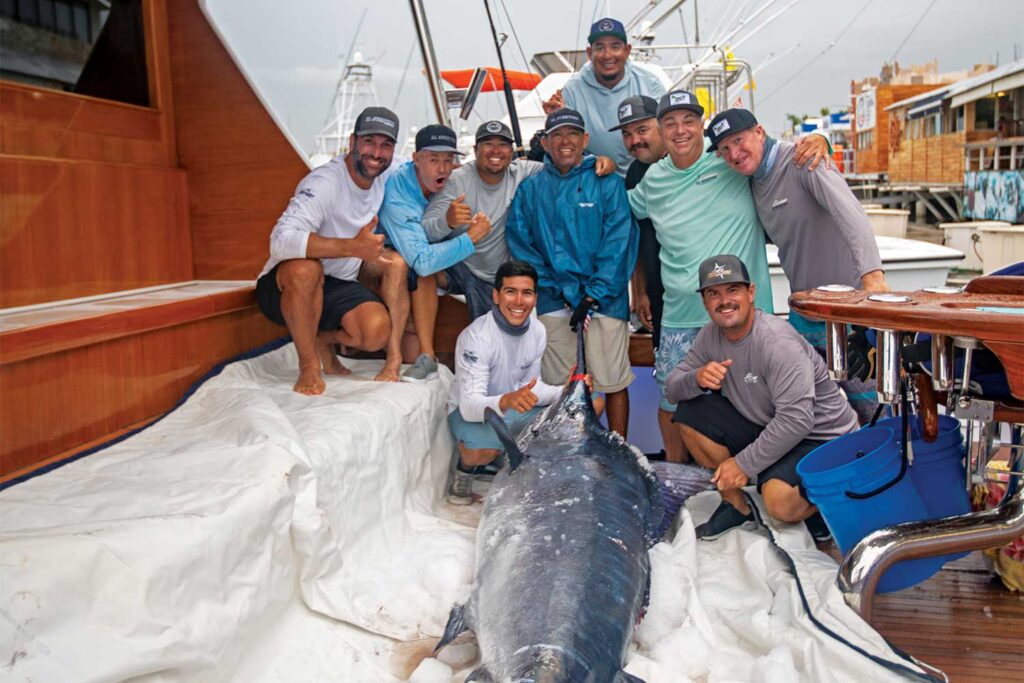
What seemed the most important to Gaskill was the ability to get that fish to the scales quickly. He likes to keep the boat as light as possible, so he doesn’t carry any more fuel than he needs to get to the scales fast. No matter the size of your fish, there is always a bigger one, so ounces matter! The longer that fish sits, the more weight it will lose. As soon as the fish door is closed with the fish on deck, the riggers are up on Builder’s Choice and they are headed for the scales.
When we think about weigh-in scenarios, the majority of us think about tournament fishing. But the ounces matter, arguably even more so, when you are targeting IGFA World Records. I spoke with Gary Carter, owner of the renowned 45-foot G&S Silver-Rod-O, about his tips on how to properly care for fish meant for the scales. Carter and his wife have traveled the world chasing IGFA records, successfully setting 43 between the two of them.
For Carter, it all starts with the endgame. “You have to be careful boating your fish and assure you do not damage it,” Carter says. “You really have to manage it on the gaffs and be certain that you don’t allow the body of the fish to get under the boat where it can get hit by the running gear.” Once the fish is on deck, crews Carter has fished with pull the gaffs out and immediately stuff rags into the gaff holes. They also shut the mouth of the fish to assure it doesn’t lose any weight by regurgitating its last meal. Had that blue marlin recently consumed a nice tuna, you certainly want that extra weight to hit the scale.
Carter and his crew cover the fish in towels and keep it wet for the ride home. Most of his fishing has been done in locations where the scales are not far from the fishing grounds. For long-distance runs in more-remote locations, Carter employs huge fish bags and a lot of ice to keep the catch in the best condition possible. Like Gaskill, Carter stressed that it is better to get to the scales sooner rather than later.
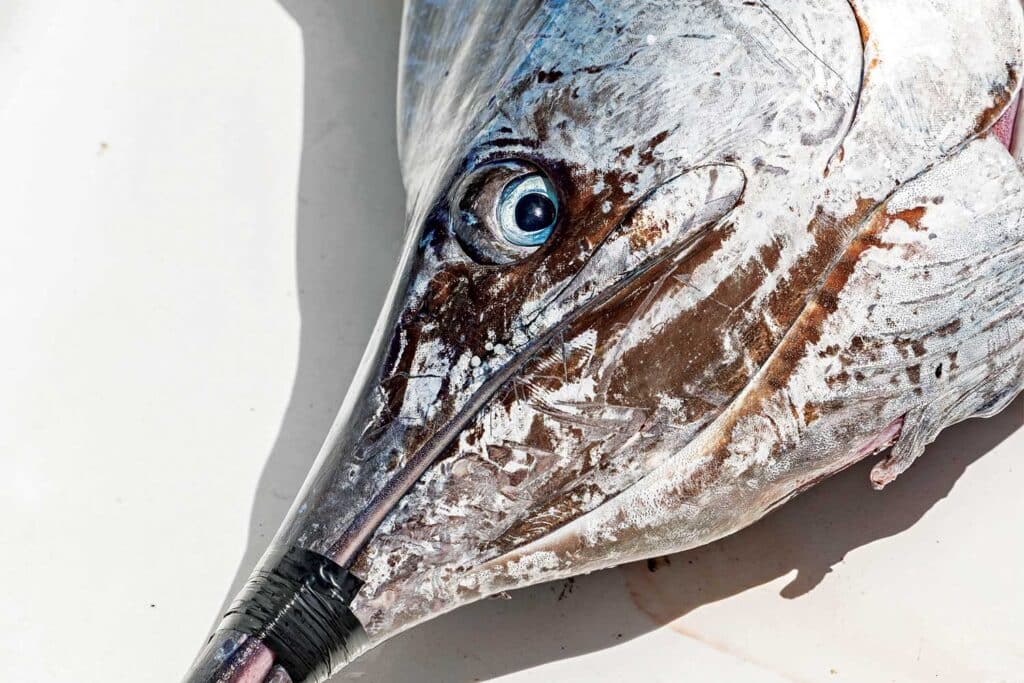
For the majority of his record catches, the weigh stations had lifts that picked the fish up out of the boat directly onto the scales. However, Carter caught a blue marlin in the Canary Islands not long ago and said it was a mess getting the fish out of the boat because weighing fish wasn’t routine there.
Read Next: The Importance of Estimating a Fish’s Size and Weight.
In the past, Carter built tripods to weigh fish when in remote locations. The IGFA allows anglers to weigh a fish on an IGFA-certified scale with a tripod affixed to the ground. Carter was prepared to use it, but they never needed to. In Vanuatu, he even weighed fish from trees. “If record fishing, do your homework beforehand on where your fish can and cannot be weighed,” Carter says, “especially if it’s a place where they don’t weigh fish normally.”
I have been fortunate enough to get to weigh fish in both types of scenarios. I have guided female angler Maureen Klause to 11 line-class world records and have competed in many tournaments in the mid-Atlantic region and the Bahamas. My tactics overall mirror those of Gaskill and Carter.
Keeping the fish wet, plugging gaff holes and getting to the scales quickly are my top priorities. If my crew cannot easily get the flying gaff out after boating the fish, we keep it in until we reach the scales and can get better access with the help of the lift.
Regardless of your reason for weighing your fish, whether it is for a tournament, an IGFA record or a personal best, use these tactics to assure you get the best weight you possibly can for your fish.
